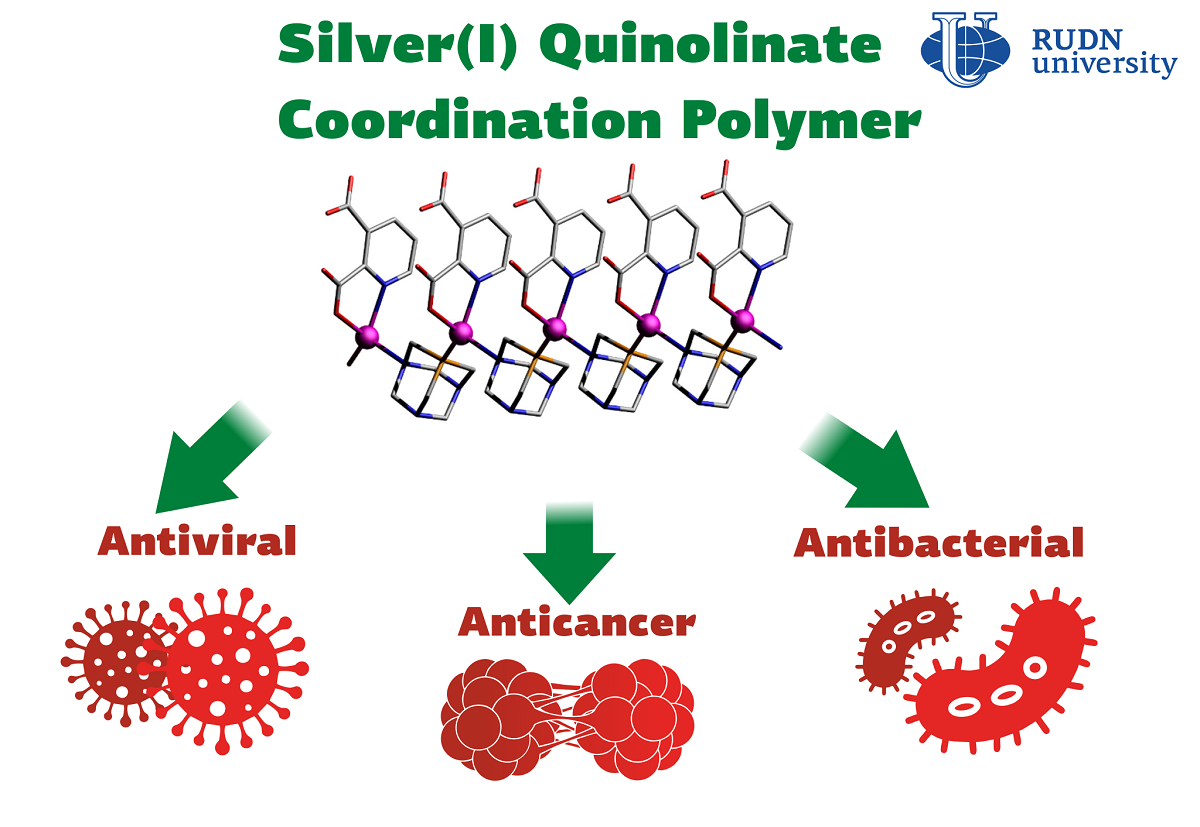RUDN University Chemist Creates Powerful Antimicrobial Drug Many Times More Effective Than Existing Ones
Coordination polymers are hybrids consisting of metal centres connected by organic ligands. They are often bioactive, so chemists are investigating the way to use them in medicine. Infectious diseases and especially viral diseases are the cause of most global pandemics. Viruses have claimed human lives for centuries and contributed to the deaths of millions of people around the world. RUDN University chemist together with colleagues from Poland created a coordination polymer based on silver and proved its effectiveness against bacteria and viruses, as well as for suppressing the growth of cancer cells.
“An assembly of biologically active metal ions and biorelevant organic pillars into metal—organic network provides an appealing way for designing new bioactive materials. The new compound showed remarkable antiviral activity, significant antibacterial activity against clinically important bacteria, and selective cytotoxicity against human cervix carcinoma cells,” said Alexander Kirillov, Doctor of Chemical Sciences, Associate of the RUDN University’s Joint Institute for Chemical Research.
Chemists have proposed a coordination polymer based on silver, which is obtained by self-assembly — starting compounds are assembled into an ordered structure like pieces of a puzzle. The reaction takes place in an aqueous or methanol medium at a temperature of about 25 degrees Celsius, using silver oxide, quinolinic acid and water-soluble aminophosphine PTA. Chemists studied the structure of the resulting complex by various methods, including X-ray diffraction analysis. The biological properties of the compound were studied on the herpes simplex virus type 1, as well as Staphylococcus aureus, Escherichia coli, and Pseudomonas aeruginosa bacteria. In addition, the chemists evaluated the ability of the new compound to destroy cancer cells of human cervix and lung carcinomas.
The new coordination polymer completely suppressed the herpes virus. Its concentration decreased by more than a million times. This is up to 2 orders of magnitude higher if compared to acyclovir (this common antiviral drug suppresses herpesvirus by four orders of magnitude, that is, reduces its amount by 10 thousand times). The antibacterial effect of the coordination polymer was approximately twice as effective as that of silver nitrate, a common bactericidal agent. The coordination polymer also has a pronounced cytotoxic effect on cervix carcinoma cells, although it did not affect the growth of lung cancer cells.
“Apart from widening the family of PTA-driven coordination polymers, the present work also provides an important contribution to better understanding of different bioactivity features of such compounds, also revealing their significant potential toward the development of novel antiviral and antimicrobial agents,” said Alexander Kirillov, Doctor of Chemical Sciences, Associate of the RUDN University’s Joint Institute for Chemical Research.
The results are published in Inorganic Chemistry.
Products derived from microalgae represent a cutting-edge development in the field of bioeconomy. The potential of this biological resource was discussed at the international research seminar “Foundations for a Green Sustainable Energy”, part of the BRICS Network University’s thematic group on “Energy”. The event was organized by the Institute of Ecology at RUDN University.
Ambassadors of Russian education and science met at a conference in RUDN University to discuss how they can increase the visibility of Russian universities and research organizations in the world, and attract more international students in Russia.
The international scientific seminar hosted by RUDN Institute of Ecology “Experience of participation in student organizations as a way to form career skills” united scholarship recipients of the International Student Mobility Awards 2024 and Open Doors, along with members of the scientific student society “GreenLab” and the professional student association “Kostyor (Bonfire)” shared their projects focused on environmental protection.
